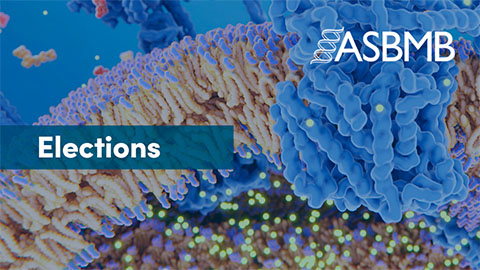Kobilka lauded for Nobel-winning studies of GPCRs
Nobel laureate Brian Kobilka, professor and chairman of the molecular and cellular physiology department at Stanford University School of Medicine, won the 2013 Earl and Thressa Stadtman Distinguished Scientist Award from the American Society for Biochemistry and Molecular Biology.

“It’s a great honor to be the second recipient of the ASBMB Stadtman Award.”
Kobilka’s work has been a pivotal in the discovery and understanding of G-protein–coupled receptor structures and functions. GPCRs are the largest family of proteins in the human genome and important drug targets — with about 40 percent of all medications targeting these types of receptors. However, their three-dimensional structure and conformation is notoriously difficult to uncover and study due to their large size, high complexity and instability. Kobilka’s original and creative approaches have allowed him to overcome many technical challenges that previously have obstructed progress in this area of science, and his work has revolutionized the study of GPCRs at the atomic level.
Kobilka was nominated for the Stadtman award by his Nobel Prize-winning partner Robert J. Lefkowitz at the Duke University Medical Center.
Lefkowitz said of Kobilka, “The talents that allowed Brian to achieve his recent successes in crystallizing GPCRs as well as the β2-adrenergic receptor-Gs complex were already apparent in the earliest stages of his career in my lab almost 30 years ago. These include remarkable technical creativity applied to seemingly intractable problems, persistence in the face of failure and a seemingly unlimited tolerance for risk in the projects that he undertakes.”
Kobilka’s lab at Stanford has developed spectroscopic methods that allow the study of GPCR structure and the changes in the receptor that occur when a ligand binds in real time. Through wide collaboration with a large, diverse group of scientists from across the globe, Kobilka has driven the field forward. In his letter of support for Kobilka’s nomination for the award, Martin Caffrey from Trinity College Dublin described one of Kobilka’s achievements as the "holy grail of GPCR science": the structure of the activated β2-adrenergic receptor in complex with its G protein. Kobilka has identified the structure of several other GPCRs as well.
Originally from Little Falls, Minn., Kobilka studied biology and chemistry at the University of Minnesota, Duluth, before training in medicine at the Yale University School of Medicine. After completing his residency at Barnes Hospital, Washington University School of Medicine, Kobilka joined Lefkowitz’s lab there for a postdoctoral project. It was there that their collaboration and Kobilka’s first work on GPCR structure began. In 1990, Kobilka moved to the Stanford University School of Medicine as an assistant professor, and he has remained there. Kobilka has continued to collaborate with Lefkowitz and has developed partnerships and strong working relationships with a number of other researchers across the world.
The Earl and Thressa Stadtman Scholar Award was established by the Stadtmans’ friends and colleagues to preserve their legacies as scientists and mentors. It is awarded to a scientist with 10 years or less of post-postdoctoral experience, including medical residency and fellowship.
Kobilka will receive his award during the Experimental Biology 2013 conference in Boston, where he will deliver an award lecture. The presentation will take place at 9:05 a.m. April 23 in the Boston Convention Center.
Enjoy reading ASBMB Today?
Become a member to receive the print edition four times a year and the digital edition monthly.
Learn moreGet the latest from ASBMB Today
Enter your email address, and we’ll send you a weekly email with recent articles, interviews and more.
Latest in People
People highlights or most popular articles

Fueling healthier aging, connecting metabolism stress and time
Biochemist Melanie McReynolds investigates how metabolism and stress shape the aging process. Her research on NAD+, a molecule central to cellular energy, reveals how maintaining its balance could promote healthier, longer lives.

Mapping proteins, one side chain at a time
Roland Dunbrack Jr. will receive the ASBMB DeLano Award for Computational Biosciences at the ASBMB Annual Meeting, March 7–10, just outside of Washington, D.C.

2026 voter guide
Learn about the candidates running for Treasurer-elect, Councilor and Nominating Committee.

Meet the editor-in-chief of ASBMB’s new journal, IBMB
Benjamin Garcia will head ASBMB’s new journal, Insights in Biochemistry and Molecular Biology, which will launch in early 2026.

Exploring the link between lipids and longevity
Meng Wang will present her work on metabolism and aging at the ASBMB Annual Meeting, March 7-10, just outside of Washington, D.C.

Defining a ‘crucial gatekeeper’ of lipid metabolism
George Carman receives the Herbert Tabor Research Award at the ASBMB Annual Meeting, March 7–10, just outside of Washington, D.C.

